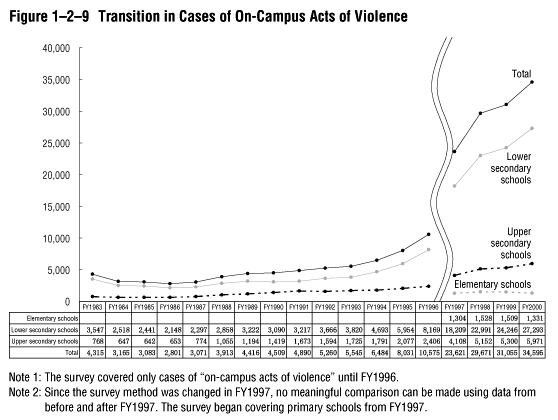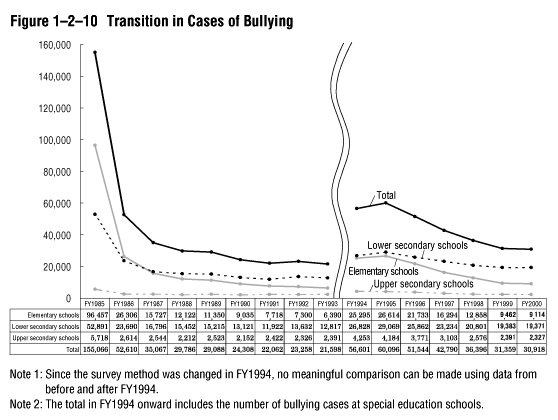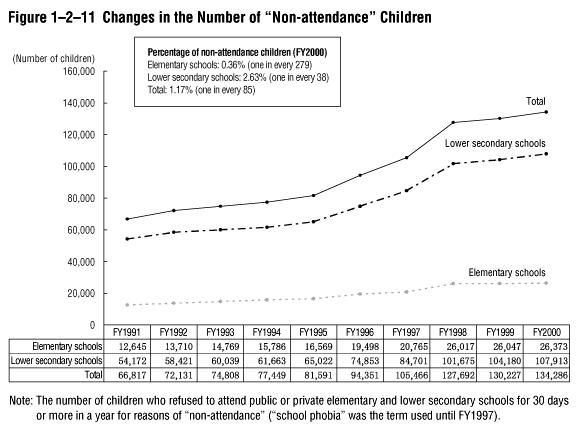| Home > Policy > White Paper, Notice, Announcement > White Paper > Japanese Government Policies in Education, Culture, Sports, Science and Technology 2001 >Chapter2 Section1.2 | ||
| {1} Violence, Juvenile Delinquency |
Acts of on-campus violence caused by public elementary and lower and upper secondary school students across Japan in FY2000 (meaning "acts of violence caused by students of schools concerned," including "violence against teachers," "violence among students," "violence against other people," and "damage to property" such as school facilities and equipment) numbered 34,595 cases at 6,173 schools, or 16.1% of all the schools. Also, there were 5,779 cases of off-campus violence at 3,328 schools, or 8.7% of all the schools ( see Figure 1-2-9 ).

By type of school, 1,331 cases of violence occurred on campus at 523 public elementary schools, or 2.2% of all such schools, while 152 cases of violence took place off campus at 115 public elementary schools, or 0.5% of the total. For public lower secondary schools, 27,293 cases of violence occurred on campus at 3,715 schools, or 35.5% of all the lower secondary schools, while 3,992 cases of violence took place off campus at 2,145 schools, or 20.5% of the total. For upper secondary schools, 5,971 cases of violence occurred on campus at 1,935 schools, or 46.7% of all the upper secondary schools, while 1,635 cases of violence took place off campus at 1,068 schools, or 25.8% of the total.
| {2} Bullying |
A total of 30,918 cases of bullying were reported at public elementary, lower and upper secondary and special education schools across Japan in FY2000. Though the total number was down by 441 cases from the previous fiscal year, the situation remains seriously worrying ( see Figure 1-2-10 ).

| {3} Non-attendance |
The number of students who refused to attend school for 30 days or longer in a year for reasons of "non-attendance" reached 134,286 at public and private elementary and lower secondary schools across Japan in FY2000 (130,227 in the previous fiscal year), setting the new high since the start of the survey and posing a serious educational problem ( see Figure 1-2-11 ).

The causes and backgrounds of the above-mentioned problem behavior are varied and different for each of the individual cases, but can be considered to be a complicated combination of factors such as the following:
In responding to problem behavior of children, it is necessary for schools, families, local communities and related public organizations to cooperate and address the problems as one. At school, it is important to address the problems in the following way:
In support of these efforts, MEXT is promoting a variety of measures, including the following, in a comprehensive manner:
| Back To Top | MEXT HOME |